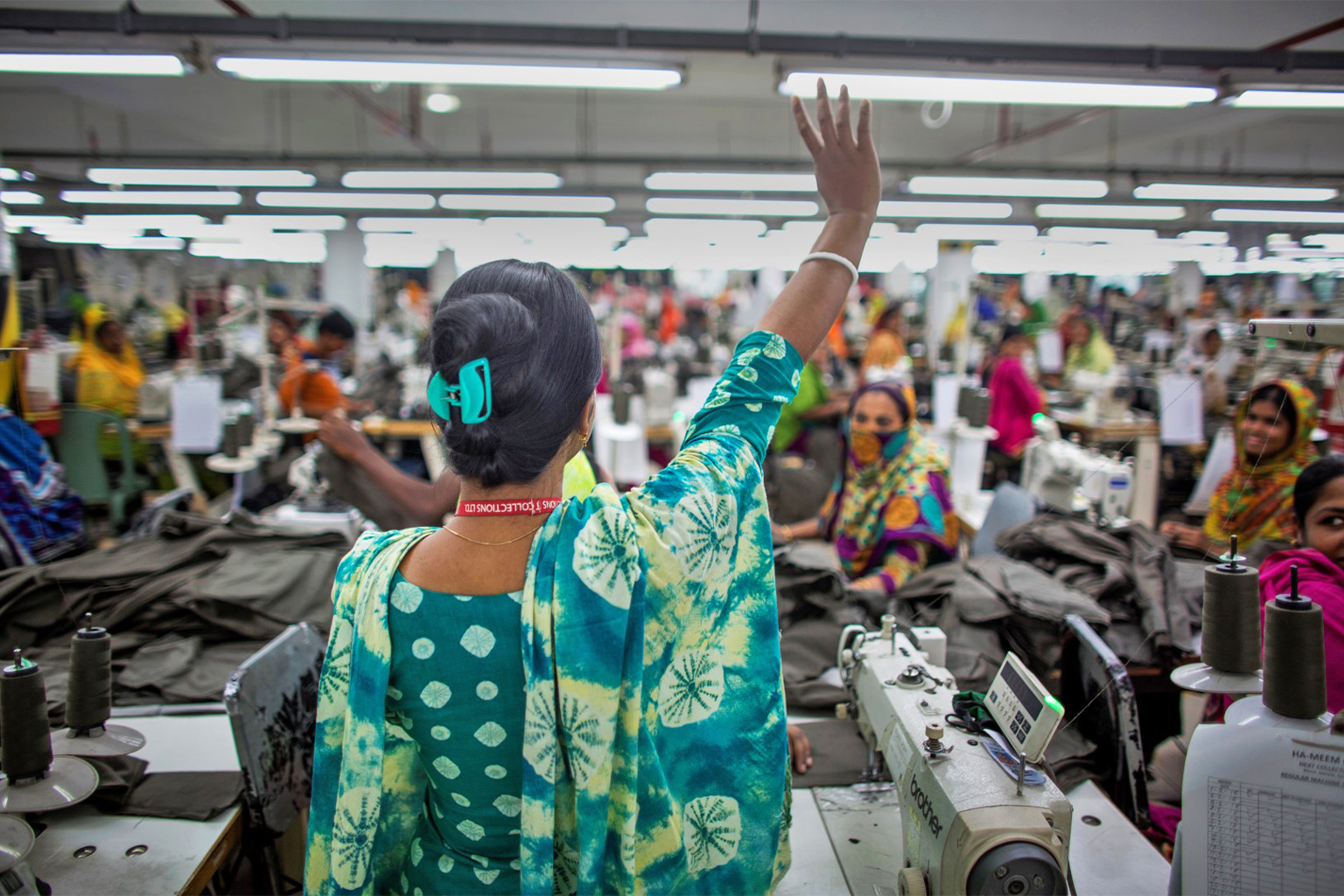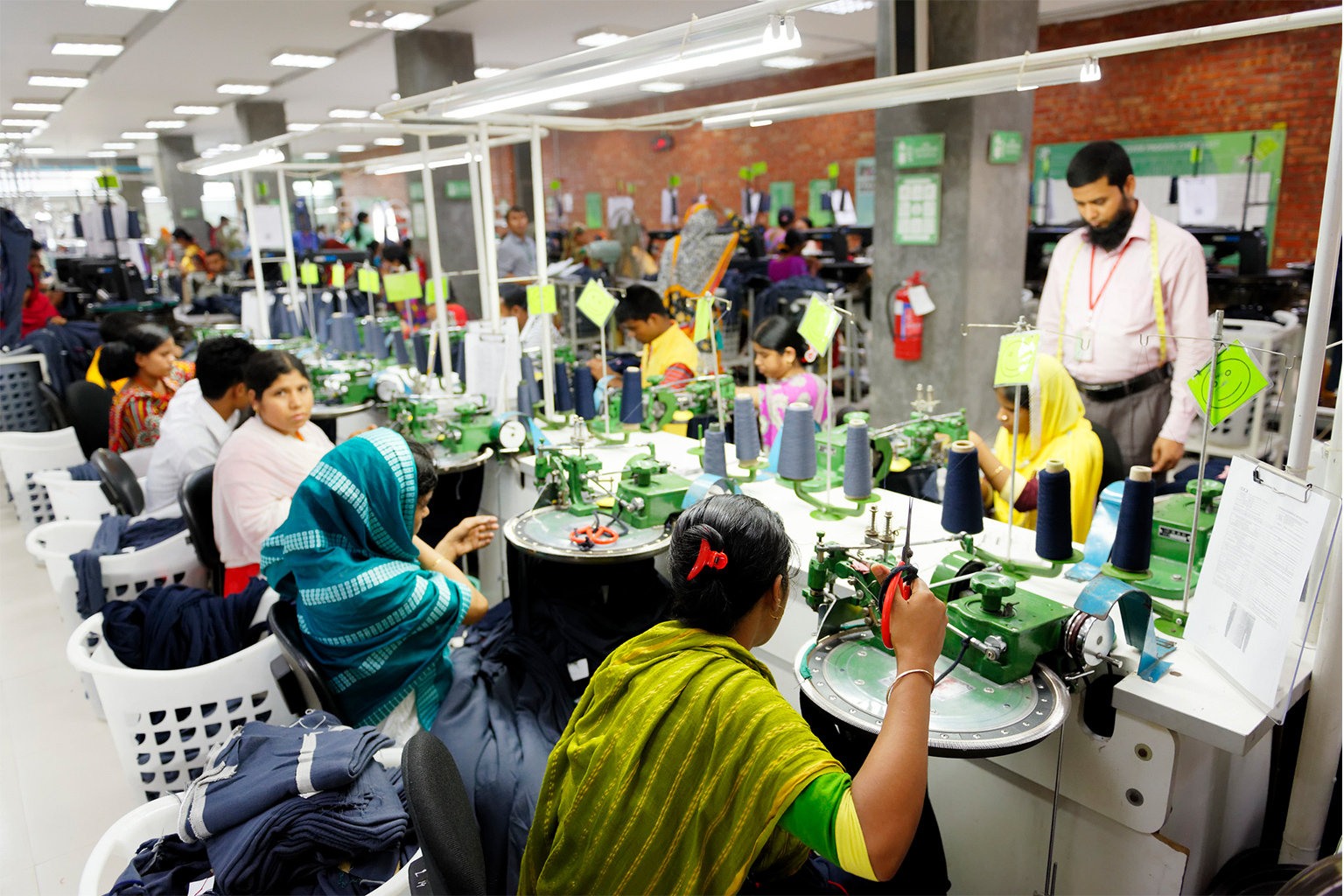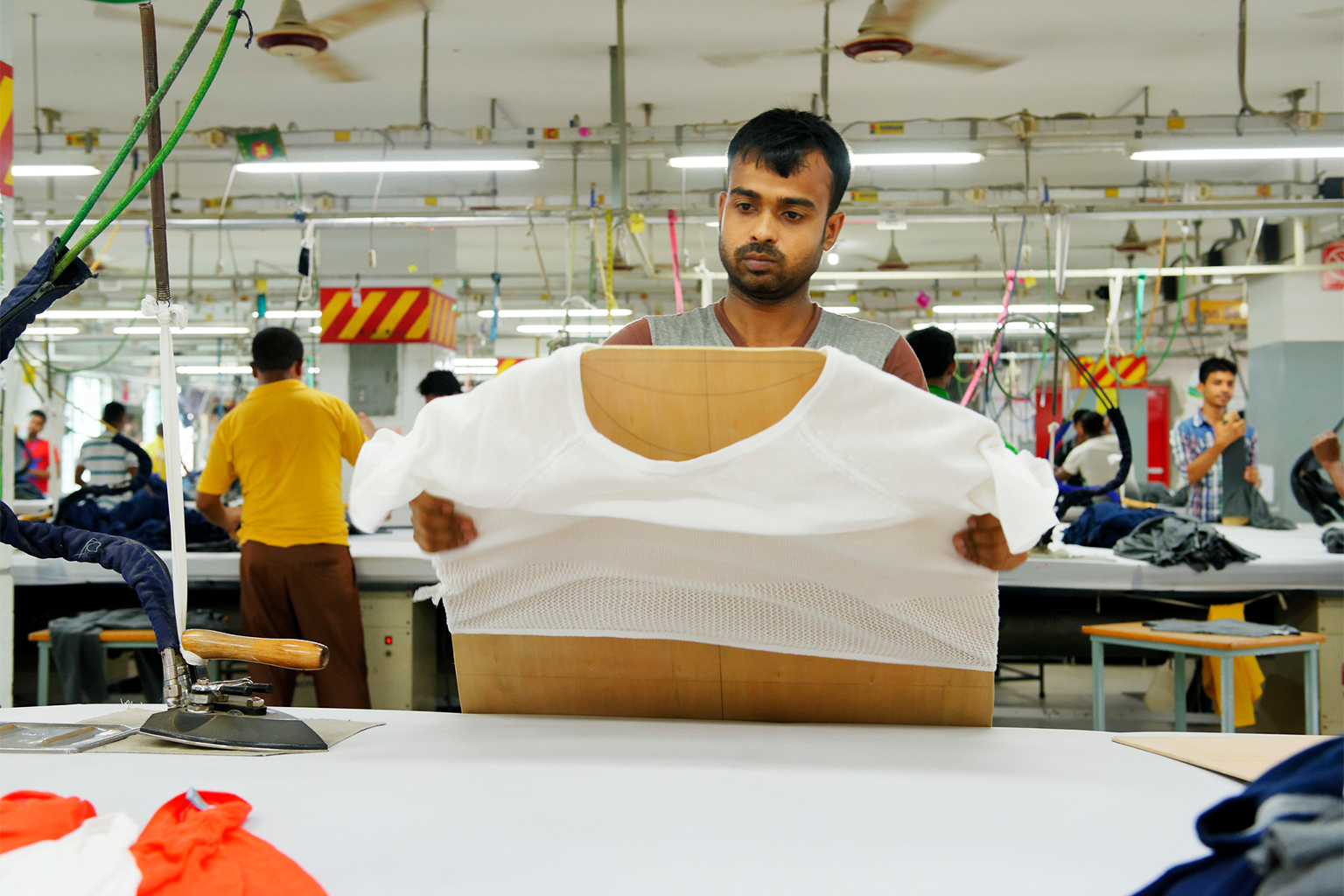India is not getting any aid anyhow - it is a superpower remember?

Also, what is your govt. doing about your industrial infra being climate friendly?
The showing against even Bangladesh is not good.
I don't hear much about Indian industry about carbon offsets or anything ecological.
Not being sarcastic - I am serious.
------------------------------------------------------------------------------------------------------------------------
Bangladesh apparel industry makes progress in ‘eco-friendly’ manufacturing
by
Ibrahim Hossain Ovi on 19 September 2023
- According to the United Nations Environment Programme (UNEP), the fashion industry is responsible for 10% of carbon emissions annually. If the current pace of greenhouse gas emissions continues, it will surge by more than 50% by 2030.
- Bangladesh, the second-largest exporter in the $45 billion ready-made garment (RMG) industry with a 7.9% of the global market share and 4.4 million employees, mostly rural women, are very cautious in limiting the environmental impacts and carbon emission through its green initiatives.
- In the last 15 years, Bangladesh has set an example of green and sustainable manufacturing by establishing numerous certified green factories.
- Since 2009, Bangladeshi apparel and textile manufacturers have established 202 “eco-friendly” factories certified by the U.S. Green Building Council (USGBC), the highest in the world.
The global fashion industry is widely known for the environmental pollution throughout its supply chain.
According to the
United Nations Environment Programme (UNEP), the fashion industry is responsible for 10% of carbon emissions annually. If the current pace of greenhouse gas emissions continues, it will surge by more than 50% by 2030.
The
Sustainable Apparel Coalition (SAC) has set a target to reduce 45% of emissions by 2030 to help limit global warming to 1.5° Celsius (2.7° Fahrenheit).
Bangladesh, the
second-largest exporter of ready-made garment (RMG) items with a 7.9% of the global market share, is an integral part of the environmental pollution problem and conributor of carbon emissions.
However, the $45 billion industry, which employs of 4.4 million people — mostly rural women — puts significant effort into limiting its environmental impacts and carbon emissions through its green initiatives.
In the last 15 years, Bangladesh has set an example of green and sustainable manufacturing by establishing numerous certified green factories.
Since 2009, Bangladeshi apparel and textile manufacturers have established 202 “eco-friendly” factories certified by the
U.S. Green Building Council (USGBC), the in the world.
According to the USGBC, a green factory, known as “eco-friendly,” is developed and equipped with design and manufacturing processes that efficiently improve greenhouse gas emissions and curtail environmental pollution and energy consumption.
Green certification is a rating system that reviews green initiatives such as sustainable site development, water efficiency, less energy consumption and atmosphere conservation. It also considers how the company will reduce environmental impacts.
According to USGBC data, under the industrial category, the United States has 216 green factories, the highest, while Bangladesh has 202 certified green factories in the RMG and textile sectors.
The RMG industry in Bangladesh employs of 4.4 million people — mostly rural women. Image by ILO via
Flickr (
CC BY-NC-ND 2.0).
China is the number-one RMG exporter and has 173 green factories, followed by Mexico at 77. Bangladesh’s closest competitor in the apparel market, Vietnam, has 69 green factories, followed by Taiwan with 49, India with 49, Turkey with 43, Pakistan with 36 and Sri Lanka with 32. But those countries’ factories are in different categories, not only in the RMG and textile sectors.
For a better living and in order to save the planet for the next generation, people widely feel the urgency of reducing climate change impacts and curbing carbon emissions in clothing manufacturing and other industries, said Md. Zillur Rahman Mridha, Managing Director of,
Vintage Denim Studio.
“To me, every drop of water, or a tree, matters greatly. The Earth where we live needs to be cared for. Business is not to make money but to create employment and for the people’s well-being. Similarly, we can’t endanger the planet through our production cycle,” added Rahman, who leads the country’s first RMG factory with LEED Platinum certification, which it received in 2009.
Through the green initiatives, Vintage Denim Studio reduced 46% of energy costs, lowered its carbon footprint by 45%, and cut water use costs by 53%. It generates a certain portion of electricity from renewable sources.
TEAM Group, a sustainably growing RMG conglomerate, states that it cares about environment, social and governance (ESG) goals and has integrated this into its business practices.
“In the present global context, the new-generation consumers, especially the millennial and Generation Z, are very concerned over the environmental and social value of the product, which is often termed as the noneconomic value of a product, which is one of the major dealing points in business nowadays,” said Abdullah Hil Rakib, managing director of TEAM Group.
“I believe a green factory complements the sustainability vision in multiple ways, like reducing environmental footprint
, such as carbon footprint, specific energy consumption reduction, water footprint, ensuring better indoor air quality, thermal comfort and safety for workers,” said Rakib, who is also a director of the
Bangladesh Garment Manufacturers and Exporters Association (BGMEA).
Workers and supervisors are seen working side by side in one of Bangladesh’s exporting garment factories. Image by Marcel Crozet / ILO via
Flickr (
CC BY-NC-ND 2.0).
TEAM Group has two LEED-certified green factories, while two more projects are in the pipeline.
“Though it doesn’t give any extra benefit in terms of price, it is a huge pride for all of us, as Bangladesh emerged as the home of the highest number of green factories in the world.”
And it will change the narrative of Bangladesh RMG industry in the long run, which already has turned number one in sustainability, he added.
In the manufacturing process in a green factory, exporters consume less water and recycle fewer chemicals and renewable energy through rooftop solar panels and ozone washing machines. Thus, we made ourselves lovers of sustainable manufacturers, he added.
“As a businessman, I have the responsibility to protect the Earth for the next generation and curtail environmental impacts while manufacturing clothing items,” said S.M. Khaled, managing director of
Snowtex, a LEED-certified green factory.
“Responsibilities towards the environment and society drove me to establish an eco-friendly factory.”
A garment worker is seen during his shift in a clothing plant. Image by Marcel Crozet / ILO via
Flickr (
CC BY-NC-ND 2.0).
Cost and benefit analysis
It costs 25-30% more than a traditional factory to set up a green factory. On the other hand, machinery and technology are also expensive because of power consumption efficiency. However, green practices cost more in the short term but pay off in the long run.
The return on investment can be regained after a certain period, as the factory uses less water and consumes less electricity while recycling water with rainwater harvesting, said Khaled.
For example, it costs about 1,000 taka ($9) to buy an LED light, but it costs 100 taka ($0.90) for a conventional tube light. As LED light consumes very little electricity, the return on investment can be released after a certain period. In addition, solar panel use is a move toward renewable energy.
Green-certified factories are not alone; compliant factories — factories that have taken safety precautions in terms of fire, electrical and structural safety and comply audits of buyers — have also taken different types of measures with the help of BGMEA to reduce the use of natural resources to mitigate environmental impacts.
Some Bangladeshi apparel manufacturers adopted the
Partnership for a Cleaner Textile (PaCT) in collaboration with the International Finance Corporation, BGMEA and the Netherlands embassy to ensure sustainable water resources management and positive environmental change in textile wet processing.
They also initiated
Zero Discharge of Hazardous Chemicals to stop pollution.
“Undoubtedly, Bangladesh RMG sector is a leader in sustainability and environment protection as we turned the sector safeties and compliance from the disastrous incident,” BGMEA president Faruque Hassan said.
“Compared to our closest competitors — Vietnam, Turkey, Pakistan and India — and the number-one exporter of fashion goods, we housed the highest green factory in the world,” said Hassan.
We aim to be a leader in cutting carbon and zero environmental impacts. But, here, the buyers and the stakeholders must ensure their participation in the process. Ethical buying practices are a must, said the business leader.
Compliant factories — factories that have taken safety precautions in terms of fire, electrical and structural safety and comply audits of buyers — have also taken different types of measures with the help of BGMEA to reduce the use of natural resources to mitigate environmental impacts. Image by ILO via
Flickr (
CC BY-NC-ND 2.0).
Collaboration between buyers and suppliers
In expediting manufacturers’ steps toward sustainability and encouraging them, buyers and brands both have responsibility to pay a better price and place more work orders.
“Manufacturers did their duties in going green to reduce environmental impacts by making a huge investment. Now, it is buyers’ responsibility to develop a cooperative mind and practice buying norms to ensure fair prices of goods,” said Khondaker Golam Moazzem, research director at
Centre for Policy Dialogue.
Protecting the Earth through sustainable and environment-friendly manufacturing is a shared responsibility where buyers and manufacturers must work together. Similarly, the government must provide both financial and policy support to establish more green factories, said the economist.
“As a company with an ambitious sustainability agenda,
H&M Group — the largest buyer from Bangladesh — welcomes initiatives helping the industry move towards a circular, fair and equal textile industry,” said Ziaur Rahman, H&M Group country manager for Bangladesh.
“We don’t require our suppliers to endorse a specific environmental certification; what is important to us is that they share our ambition to shift towards circular production processes, GHG emissions reductions and taking climate action.”
The company actively works with its long-term suppliers to reduce GHG emissions as one of its main priorities. In its latest sustainability disclosure, the company further exemplified how it is helping finance GHG emissions reductions as well as progress on shifting toward circular production processes, he added.












